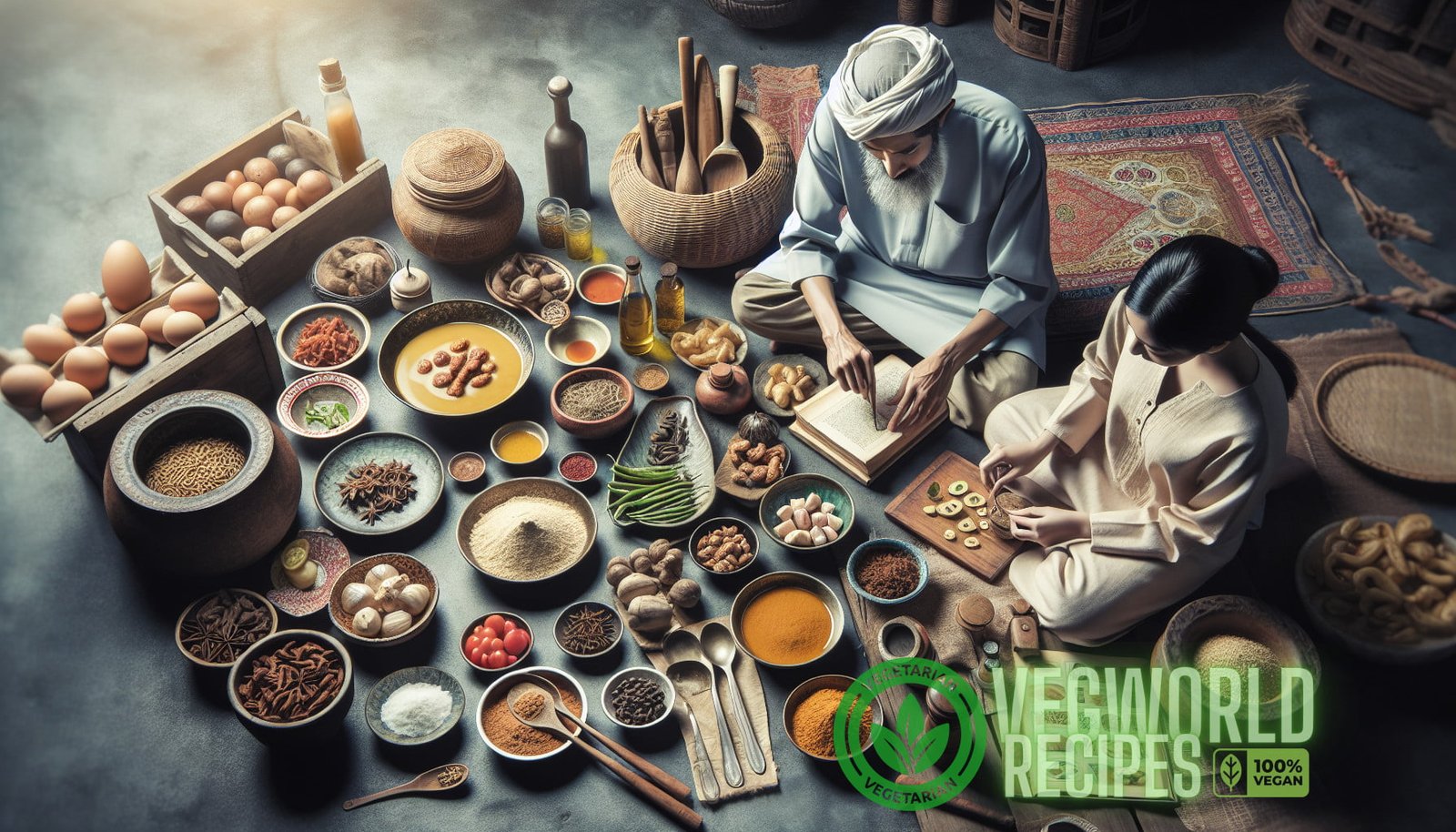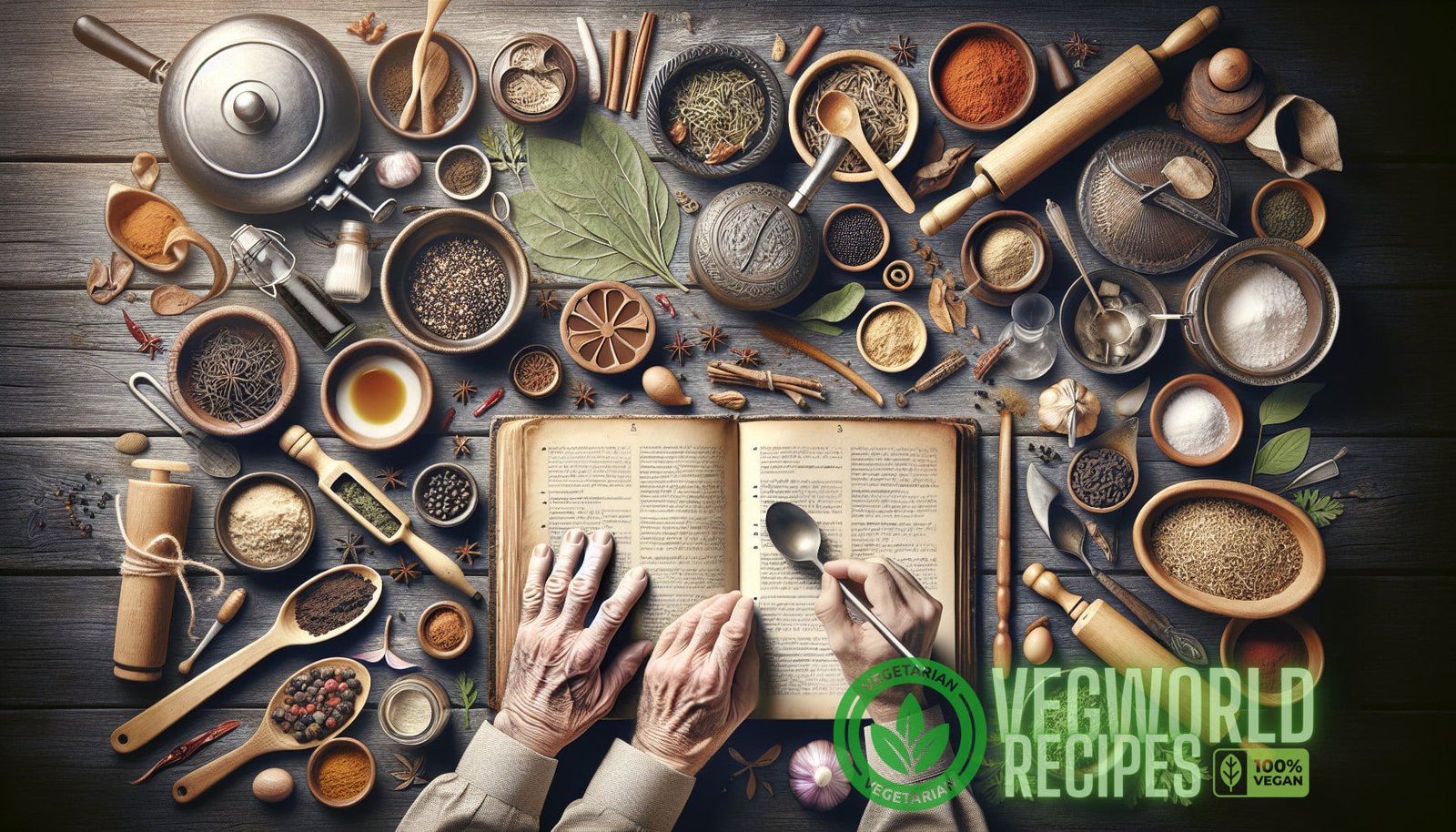Introduction
Welcome to our guide on reviving forgotten culinary traditions and unveiling the ancient and remarkable flavors of world cuisines. In this guide, we will explore the rich and diverse culinary heritage that has been passed down through generations, but which has unfortunately been overshadowed by modern and more commercially popular dishes.
As we journey through different countries and cultures, we will rediscover the forgotten flavors that have shaped traditional recipes and explore the incredible ingredients, techniques, and stories behind them. From aromatic spices and exotic fruits to hearty stews and delectable desserts, we will delve into the fascinating world of ancient cuisines.
Why Revive Forgotten Culinary Traditions?
Reviving forgotten culinary traditions is essential for preserving the cultural identity of a community or country. Traditional dishes and recipes are an integral part of a nation’s heritage, passed down through generations, and deeply rooted in the local culture. By reviving these ancient flavors, we not only keep history alive but also discover new tastes and aromas that have been lost in time.
In addition to cultural preservation, reviving forgotten culinary traditions can also have a positive impact on sustainability and biodiversity. Traditional recipes often rely on locally grown and seasonal ingredients, resulting in less reliance on mass-produced and imported goods. By rediscovering and embracing these ancient flavors, we can promote sustainable farming practices and support local communities.
Furthermore, forgotten culinary traditions can provide a way for individuals and communities to connect with their roots and find a sense of belonging. Food has a unique ability to evoke memories and create a sense of nostalgia. By reviving ancestral recipes, we honor our ancestors and create a bridge between the past and the present.
The Global Delights of World Cuisines
World cuisines offer an incredible array of flavors, textures, and cooking techniques. Each region and country has its own unique culinary traditions that have evolved over centuries. From the hearty and comforting dishes of Europe to the spicy and vibrant flavors of Asia and the exotic delicacies of Africa, there is a world of culinary delight waiting to be discovered.
Whether it’s the intricate and aromatic spices of Indian cuisine, the delicate balance of flavors in Japanese cuisine, or the bold and fiery dishes of Mexican cuisine, each culinary tradition has its own distinct identity. By exploring and reviving these ancient flavors, we can broaden our culinary horizons and gain a deeper appreciation for the diversity of global cuisine.
Rediscovering Ancient Flavors
The Importance of Traditional Ingredients
Traditional ingredients play a vital role in reviving forgotten culinary traditions. They are the building blocks of traditional recipes and the key to unlocking the authentic flavors of ancient cuisines. These ingredients are often sourced locally, reflecting the unique terroir and climate of a region.
For instance, the use of fresh herbs such as rosemary and thyme in Mediterranean cuisine adds a distinctive aroma and flavor to dishes. Similarly, the vibrant spices like turmeric, cumin, and coriander in Indian cuisine provide a rich and complex taste profile. By sourcing and using these traditional ingredients, we can truly capture the essence of a cuisine and revive its forgotten flavors.
One way to source traditional ingredients is by exploring local markets and specialty stores. These places often stock a wide range of authentic products that are not commonly found in supermarkets. Additionally, farmers’ markets are a great way to connect with local growers and producers who are dedicated to preserving heirloom varieties and traditional farming practices.

Recreating Traditional Techniques
In addition to traditional ingredients, reviving forgotten culinary traditions also involves recreating traditional cooking techniques. These techniques are passed down through generations and have been perfected over centuries. They are an essential part of the culinary heritage and contribute to the unique flavors and textures of traditional dishes.
For example, the art of slow cooking in clay pots is reminiscent of ancient cooking techniques used in many countries. This method preserves the natural flavors of the ingredients and creates tender and succulent dishes. Similarly, the technique of fermenting foods, such as kimchi in Korean cuisine or sauerkraut in German cuisine, not only adds complex flavors but also improves the nutritional value and shelf life of the ingredients.
To recreate these traditional techniques, it’s important to understand the principles behind them and the science of cooking. This can be achieved through research, experimentation, and learning from experienced cooks and chefs who have mastered these techniques.
Exploring World Cuisines
Asian Delicacies: From Dumplings to Curries
Asian cuisine is known for its bold flavors, aromatic spices, and exquisite presentation. From the delicate dumplings of China to the fiery curries of India, there is a wide variety of flavors and techniques to explore in Asian culinary traditions.
In Chinese cuisine, dim sum is an iconic tradition featuring bite-sized portions of various dishes such as steamed dumplings, spring rolls, and buns. These delicate morsels are often enjoyed with tea and are a testament to the skill and artistry of Chinese culinary traditions.
Indian cuisine, on the other hand, is renowned for its intricate use of spices and the balance of flavors in dishes such as biryani, curry, and dosa. The diverse regional cuisines of India offer a treasure trove of flavors to discover, from the rich and creamy curries of the north to the spicy and tangy dishes of the south.
Japanese cuisine is celebrated for its simplicity and attention to detail. Sushi, sashimi, and tempura are just a few examples of the exquisite dishes that are part of this ancient culinary tradition. The delicate flavors and elegant presentation of Japanese cuisine reflect the country’s deep appreciation for aesthetics and precision.
Exploring the culinary traditions of Asia is like embarking on a culinary adventure. Each country offers a unique perspective on flavors, techniques, and ingredients, and there is always something new and exciting to discover.
An example of a popular Asian delicacy is the dumpling, which has variations across different Asian cuisines, from the Chinese jiaozi to the Japanese gyoza.
European Classics: From Pasta to Pastries
European cuisine is steeped in tradition and history, with each country boasting its own distinct culinary heritage. From the pasta and pizza of Italy to the hearty stews and roasts of Germany, European classics offer a rich tapestry of flavors and techniques.
Italian cuisine is renowned for its simplicity and the use of fresh, high-quality ingredients. From traditional pasta dishes like spaghetti carbonara and lasagna to regional specialties like risotto and gnocchi, Italian cuisine is a celebration of flavors that have stood the test of time.
French cuisine is often considered the pinnacle of culinary art. It is characterized by its refined techniques and meticulous attention to detail. From classic dishes like coq au vin and beef bourguignon to delicate pastries like croissants and macarons, French cuisine is a true feast for the senses.
Spanish cuisine, with its vibrant flavors and colorful presentation, is another gem of European gastronomy. From the iconic paella to tapas and churros, Spanish cuisine reflects the country’s rich cultural heritage and diverse regional variations.
Exploring the culinary traditions of Europe is like stepping back in time and experiencing the recipes and techniques that have shaped the continent’s gastronomy. From rustic peasant dishes to elaborate royal feasts, European classics have something to offer every palate.
Preserving Forgotten Culinary Traditions

Documenting and Sharing Recipes
One of the key ways to preserve forgotten culinary traditions is by documenting and sharing traditional recipes. Many of these recipes are passed down orally from generation to generation and are in danger of being lost forever. By recording these recipes, we can ensure that future generations have access to the rich culinary heritage of their ancestors.
There are several ways to document traditional recipes. One option is to create a family cookbook that includes recipes from different family members. This not only preserves the tradition within the family but also provides an opportunity to share the recipes with future generations.
Another approach is to collaborate with local communities and cultural organizations to collect and preserve traditional recipes. This can be done through oral interviews, recipe competitions, or community cookbooks. By involving the community in the process, we can ensure that the knowledge and traditions are shared and celebrated.
Supporting Local Producers and Farmers
Supporting local producers and farmers is an essential part of preserving forgotten culinary traditions. Traditional recipes often rely on locally sourced and seasonal ingredients that may be at risk due to modern agricultural practices and globalized supply chains.
By purchasing locally grown and produced ingredients, we can support small-scale farmers and artisans who are dedicated to preserving traditional farming techniques and heirloom varieties. This not only helps sustain local economies but also ensures the availability of traditional ingredients for future generations.
Another way to support local producers is by promoting farmer’s markets and community-supported agriculture (CSA) programs. These initiatives provide direct access to fresh and locally sourced ingredients and help forge a connection between consumers and the people who grow their food.
Conclusion
Reviving forgotten culinary traditions is a journey of exploration and discovery. By delving into the ancient flavors of world cuisines, we not only preserve cultural heritage but also gain a deeper appreciation for the diversity and richness of global cuisine.
As we reconnect with traditional ingredients and techniques, we revive the forgotten flavors that have shaped traditional recipes. Whether it’s the delicate balance of spices in Indian cuisine or the hearty stews of European classics, each culinary tradition has its own distinct identity and story to tell.
By documenting and sharing traditional recipes, supporting local producers, and embracing sustainable practices, we can ensure that these ancient flavors continue to thrive and inspire future generations.
With every bite, we pay homage to the past and create a bridge between the forgotten flavors of yesterday and the diverse tastes of today.


